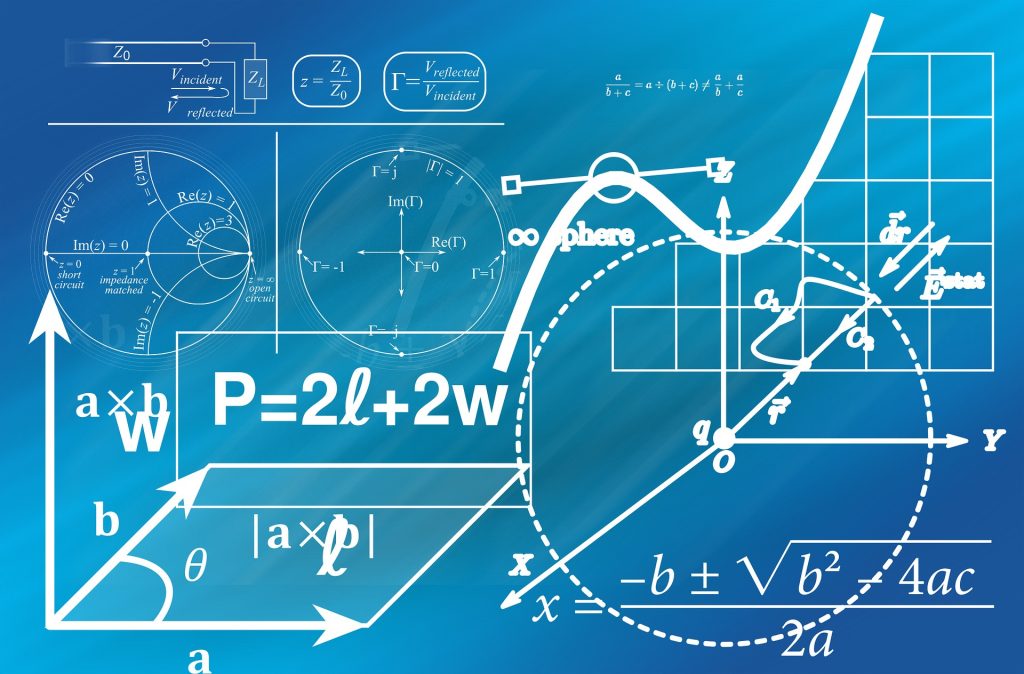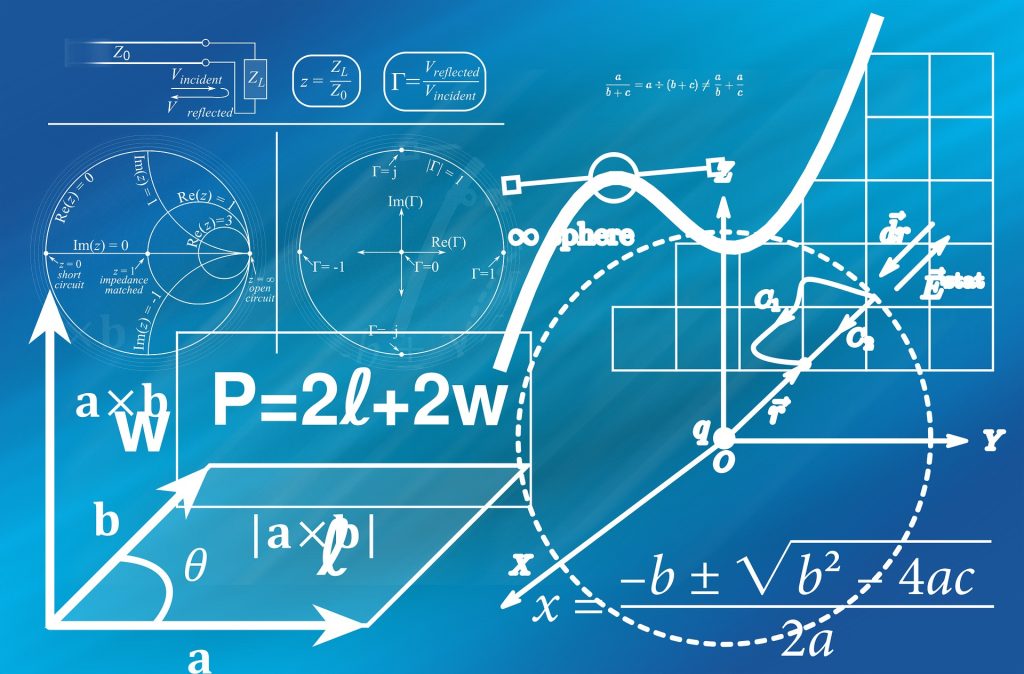Kari Lilja, TkT, Erikoistutkija; Sirpa Sandelin, TkT, Yliopettaja
English version: Click the link
Menneellä viikolla silmiini tarttui uutinen, jonka mukaan suomalaisten yhdeksäsluokkalaisten matematiikan osaaminen on heikompaa kuin koskaan. Jopa sana ”funktio” oli kuulemma tuntematon huomattavalle osalle tutkimuksen otokseen kuuluneista opiskelijoista. Kun kaivauduin syvemmälle aiheeseen ja etsin itse Koulutuksen arviointivirasto KARVIn tutkimuksen, johon artikkeli perustui, totesin, että kyse ei itse asiassa ollut matematiikan taidoista, vaan kyvystä ymmärtää sanallisia tehtäviä. Tutkimusraportissa todettiin, että ”oppilaiden osaaminen erityisesti matematiikan erityissanastossa, ongelmanratkaisutehtävissä ja sanallistetuissa tehtävissä on oleellisesti heikentynyt vuosien varrella” [1]. Toisin sanoen, kyse on ollut kyvystä ymmärtää suomen kieltä.
Toimittajallakin.

Toki tutkimuksessa nostettiin esille muitakin asioita, kuten se, että tulokset heikentyivät aikaisempiin tutkimuksiin verrattuna erityisen paljon niissä osissa, joissa opiskelija joutui käyttämään digitaalisia työkaluja, kuten matematiikkaeditoria. Opiskelijat eivät myöskään perustelleet vastauksiaan samalla tavoin kuin aikaisemmin kynän ja paperin avulla toteutetuissa tutkimuksissa, ja osa aineistosta jouduttiin pudottamaan kokonaan pois loppuraportista puuttuvien perusteluiden takia. Selvittämättä jäi, johtuiko perusteluiden puuttuminen heikosta kirjoitustaidosta, liian vaikeakäyttöisistä työkaluista, vai kenties siitä, ettei ymmärretty, miten ja miksi jokin vastaus pitäisi perustella. Myös numeeristen ja kuvallisten tehtävien ratkaisutaidoissa havaittiin heikkenemistä. Kannattaa muistaa, että kyseessä on kuitenkin eri ikäluokka kuin edellisissä tutkimuksissa. Oppilaat ovat todennäköisesti kuluneet 9 vuotta käyttäneet eri oppikirjoja, heitä on opetettu eri menetelmin ja mahdollisesti eri opettajien toimesta kuin edellisiä ikäluokkia. Yhdeksään vuoteen on saattanut mahtua monenlaisia opetuskokeiluja ja niin edelleen. Ikäluokkien suora keskinäinen vertailu ei siis ole tarkoituksenmukaista. KARVI vertaakin kunkin ikäluokan tuloksia saman ikäluokan oppimistavoitteisiin, mikä tekee tilanteesta vielä huolestuttavamman:
Tavoitteista saavutetaan aikaisempaa pienempi osa.
Nyt joku saattaa miettiä, miksi pohdin 9-luokkalaisten matematiikan osaamista ammattikorkeakoulussa, jonne tullaan lukiosta tai muusta toisen asteen koulusta. Kas. Tutkimus oli tehty keväällä 2021. Sen kohdeikäluokka on nyt suurella todennäköisyydellä toista vuotta toisen asteen opinahjossa, toisin sanoen lukiossa tai ammatillisessa koulutuksessa. Viimeistään kahden vuoden kuluttua osa heistä alkaa kolkutella ammattikorkeakoulujen ovia. Ja ainakaan Satakunnan ammattikorkeakoulussa ei ole koulutusohjelmia, joilla ei tarvittaisi matematiikan taitoja. Kaupallisella puolella pitää hallita korot, kuoletukset ja annuiteetit, teknisellä puolella lujuuslaskenta, määrälaskenta, virtaukset, jännitteet ja virrat, hyvinvointialoilla lääkelaskenta, tilastomatematiikka ja todennäköisyydet, eikä se lujuuslaskennan ja sekoitussuhteiden osaaminen tee pahaa kuvataiteessakaan, muutamia esimerkkejä mainitakseni.

Jos tulevat opiskelijat eivät hallitse edes peruskäsitteitä, riittävätkö meidän resurssimme antamaan heille tarvittava osaaminen?
Aihe liittyy suoraan myös moniin hankkeisiimme, erityisesti niihin, joissa on kyse osaamisen kehittämisestä. Jo päättyneen INTACT-hankkeen suurin anti oli se itsestäänselvyydeltä tuntuva toteamus, että kieli ja sen hallinta on tärkeintä niin kotoutumisen kuin oppimisenkin kannalta. Jos nuoret kantasuomalaisetkaan eivät hallitse omaa äidinkieltään riittävän hyvin edes ymmärtääkseen koulun opetussuunnitelmaan kuuluvia tehtäviä, onko olemassa vaara, että ulkopuolisuuden tunne myös heidän keskuudessaan lisääntyy? Nykykehityksen (jengiytyminen ja alaikäisten raaka väkivalta) perusteella vastaus näyttäisi olevan ehdoton KYLLÄ.
Useimmissa hankkeissa olemme lisäksi saaneet todeta, kuinka ensiarvoisen tärkeätä on määritellä viitekehys ja peruskäsitteet ennen koulutusten suunnittelun aloittamista, ja jopa ennen hankkeen käynnistämistä tai hankehakemuksen tekemistä.

Jos peruskäsitteitä ja yhteistä terminologiaa joudutaan hakemaan matkan aikana, hanke ja sen varsinainen työ kärsivät.
Samasta on kysymys kaikessa opiskelussa. Opittavat asiat rakentuvat aina aikaisemmin opitun perustan päälle. Jos tuo perusta on heikko, rakennelmasta tulee huojuva ja helposti sortuva. Siksi ensimmäisten kouluvuosien aikana saadut opit kantavat läpi koko elämän, eikä niiden merkitystä saa väheksyä.
Aihe koskettaa suomalaista korkeakoulumaailmaa myös toista kautta: Kun yhdeksi rahoituksen tulosmittariksi on tuotu kansainvälisyys, se on johtanut englannin kielen ja ulkomaalaisten opiskelijoiden, opettajien, tutkijoiden ja muun henkilökunnan painoarvon nousuun suomalaisessa korkeakoulumaailmassa. Ylen mukaan tilanne on tällä hetkellä jo niin paha, että moni opiskelija ei enää osaa oman alansa termejä suomeksi (https://yle.fi/a/74-20022971). Opetus- ja kulttuuriministeriön tilaaman selvityksen mukaan on jopa epäselvää, kuinka lainmukainen nykytilanne on. Kielilaki kun velvoittaa tarjoamaan opetusta ensisijaisesti suomeksi, ruotsiksi ja saameksi.
Niin, ja hei: Kielilain mukainen kaksikielisyys tarkoittaa ainoastaan suomi-ruotsi, suomi-saame ja ruotsi-saame -yhdistelmiä. Kun lain mukaisiin kotimaisiin kieliin yhdistetään muita kieliä, voidaan puhua monikielisyydestä.

Sekin on rikkaus.
[1] MATEMATIIKKAA COVID-19-PANDEMIAN VARJOSSA II: Menetelmälliset ratkaisut matematiikan 9. luokan arvioinnissa keväällä 2021, Metsämuuronen & Nousiainen (Toim.), 2023
English version
Do you know the word ”Function”?
Within the past week, the news, according to which Finnish ninth-graders’ (those in their last year in the primary school) math skills are weaker than ever, caught my eye. Even the word ”function” was reported to be unknown to a considerable part of the students in the research sample. When I studies deeper the topic and found the study published by the Education Evaluation Agency KARVI, on which the article was based, I found that the report was not actually approaching the math skills, but the ability to understand verbal tasks. In the research report, it was stated that ”students’ competence, especially in the special vocabulary of mathematics, in problem-solving tasks and verbalized tasks, has significantly weakened over the years” [1]. In other words, the problem was in their ability to understand the Finnish language.
And the editor’s too.

Of course, other issues were brought up in the study too, such as the fact that the results weakened especially much compared to previous studies in the parts where the student had to use digital tools, such as the math editor. The students also did not justify their answers in the same way as in previous studies carried out using pen and paper, and part of the material had to be completely dropped out from the final report due to missing justifications. It remained unclear, whether the lack of justification was due to poor writing skills, tools that were too difficult to use, or perhaps a lack of understanding of how and why an answer should be justified. Deterioration was also observed in the solving skills of numerical and pictorial tasks. It is worth remembering, that this is a different age group than in previous studies. In the past 9 years, students have probably used different textbooks, been taught by different methods and possibly by different teachers than the previous age groups. Nine years may have included many kinds of teaching experiments and so on. Direct comparison of age groups is therefore not appropriate. KARVI compares the results of each age group with the learning goals of the same age group, which makes the situation even more worrying:
A smaller part of the goals is achieved than before.
Now someone might be wondering why I am discussing about the mathematics skills of 9th graders in a university of applied sciences, where they come from high school or other secondary school. You see. The study was conducted in the spring 2021. Its target age group is now most likely in their second year of a second-level study program, in other words, in high school or vocational training. After two years at the latest, some of them will be knocking on the doors of universities of applied sciences. And, at least at Satakunta University of Applied Sciences, there are no educational programs that would not require math skills. On the commercial side, you have to manage interest, amortization and annuities, on the technical side, strength calculation, quantity calculation, flows, voltages and currents, in the welfare fields drug calculation, statistical mathematics and probabilities, and the knowledge of strength calculation and mixing ratios does not hurt in visual arts either, to name a few examples.

If the future students do not master even the basic concepts, are our resources sufficient to give them the necessary skills?
The topic is also directly connected to many of our projects, especially those that deal with development of knowledge, skills and education. The biggest lesson of the INTACT project, which has already ended, was the self-evident statement that language skills are the most important in terms of both integration and learning. If even young native Finns do not master their own native language well enough even to understand the tasks included in the school curriculum, is there a danger that the feeling of being outsiders will increase among them as well? Based on current development (gangs and brutal violence by minors), the answer would seem to be an absolute YES.
In most projects, we have also been bound to find out how essential it is to define the reference framework and basic concepts before starting the planning of training courses, and even before starting the project or submitting a project application.

If basic concepts and common terminology have to be looked up during the route, the project and its actual work will suffer.
The same is the case with all studies. The things to be learned are always built on the basis of what was learned earlier. If that foundation is weak, the structure becomes wobbly and easily collapses. That’s why the lessons learned during the first years of school carry throughout life, and their importance should not be underestimated.
The topic affects the Finnish higher education world also in another way: When internationality has been introduced as one of the performance indicators of funding, it has led to an increase in the importance of the English language and foreign students, teachers, researchers and other staff in the Finnish higher education world. According to Finnish national broadcast service Yle, the situation is currently so bad, that many students no longer know the terms of their field in Finnish (https://yle.fi/a/74-20022971). According to the report commissioned by the Ministry of Education and Culture, it is even unclear how legal the current situation is. The Language Act obliges to offer education primarily in Finnish, Swedish and Sami.
Oh yeah, furthermore, hi there: According to the Language Act, bilingualism only means Finnish-Swedish, Finnish-Sámi and Swedish-Sámi combinations. When other languages are combined with the domestic languages, we can talk about multilingualism.

That is richness too.
Artikkeli on kirjoitettu Euroopan unionin Erasmus+ -ohjelman rahoittamien BA&VET, Dig-Con ja Sustainabuild -hankkeiden puitteissa. Vastuu artikkelissa esitetyistä näkemyksistä on yksinomaan kirjoittajilla.
This article was written in the framework of the BA&VET, Dig-Con and Sustainabuild-projects funded by the European Union’s Erasmus + program. The sole responsibility for the views expressed in this article lies with the authors.

